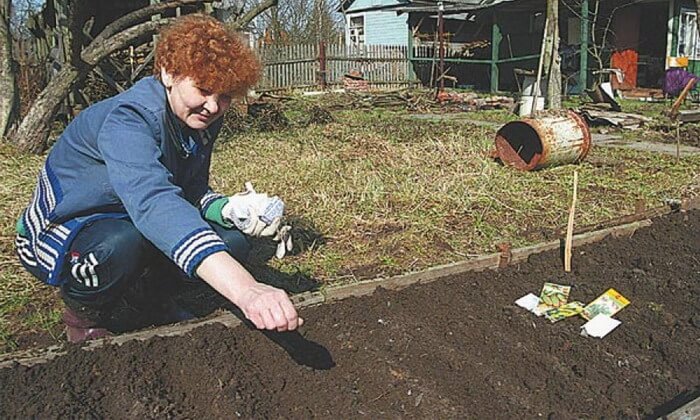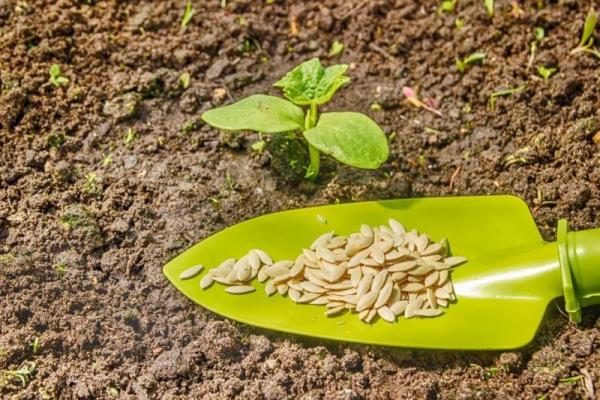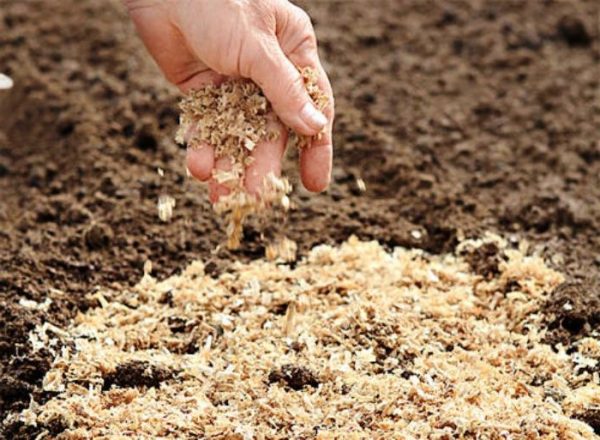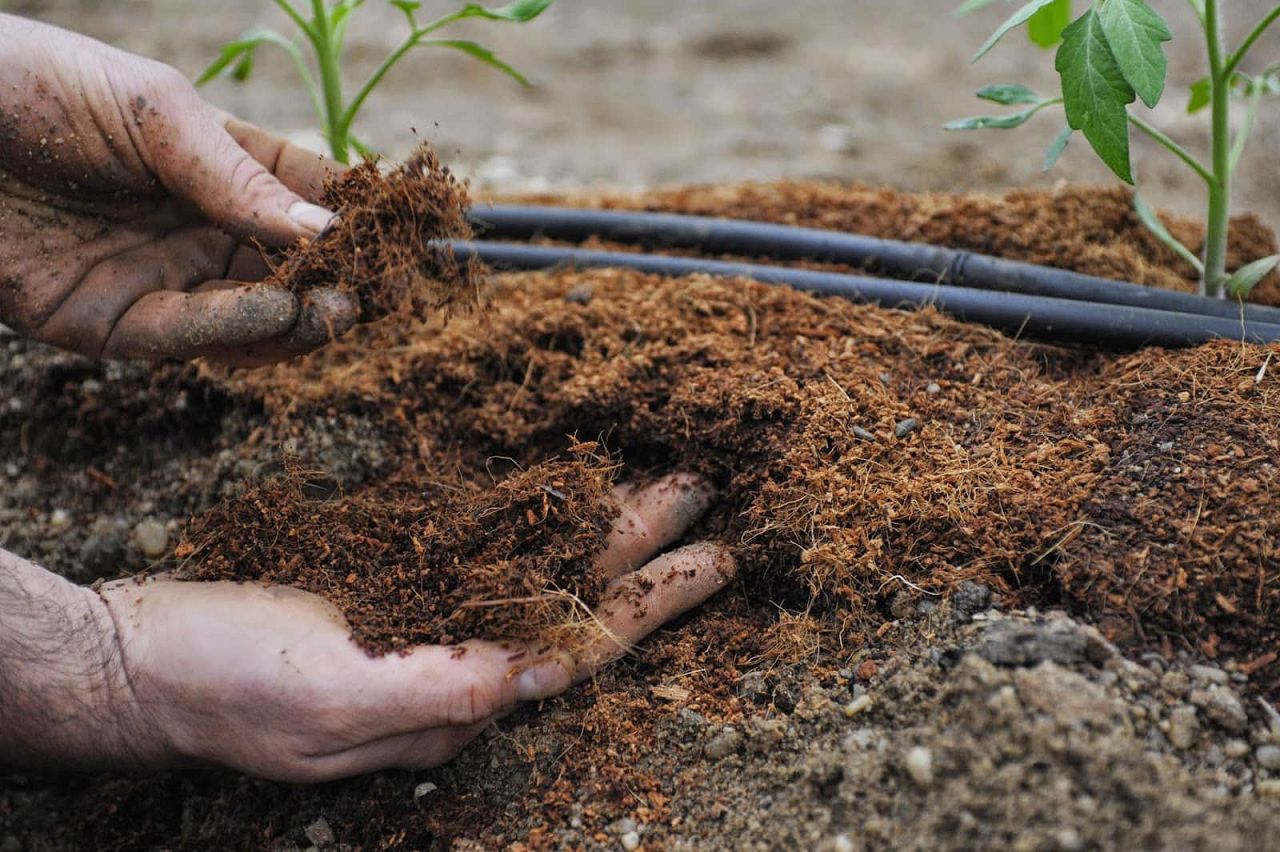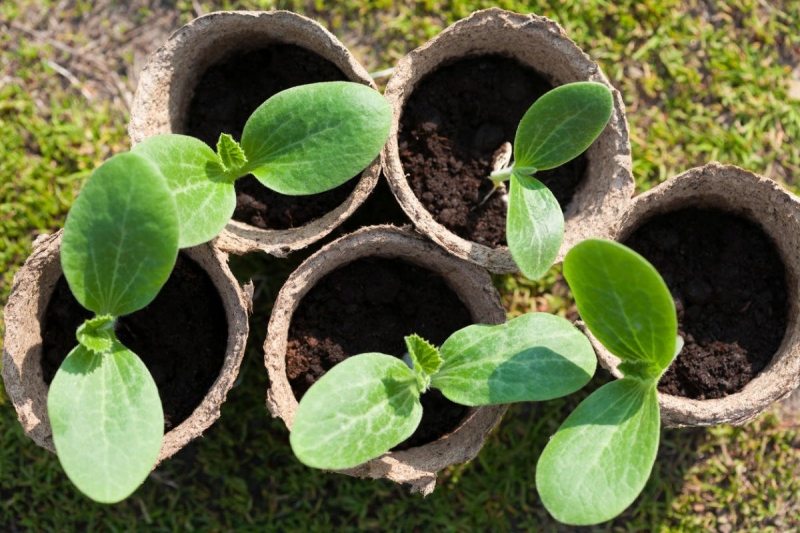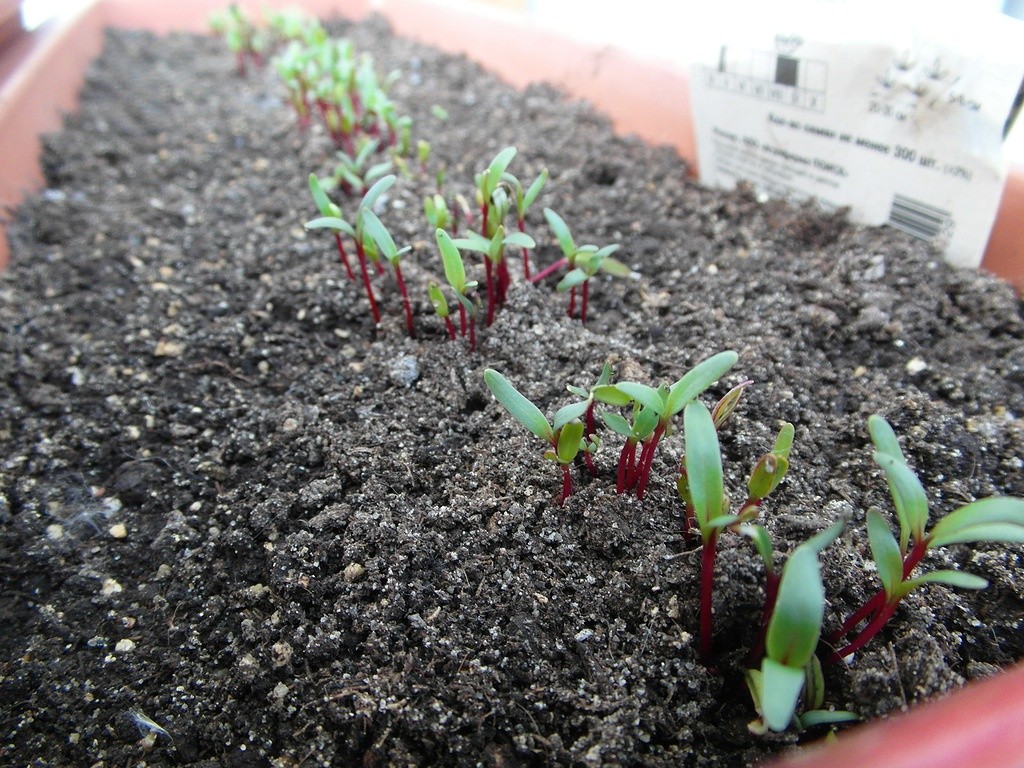Content:
In fact, zucchini is a type of common pumpkin. The crop has a short growing season, which allows 2-4 crops to be harvested in one season. Zucchini pulp is rich in mineral salts, vitamins, pectins. An easily digestible and healthy vegetable is part of the dietary menu, has a beneficial effect on the work of the digestive system and skin condition. Summer residents are happy to grow it on their plots. The main thing is to adhere to agricultural techniques.
Conditions for growing outdoors
Among other pumpkin plants, squash stands out for its accelerated ripening. From sowing to harvest, some varieties only take 40-45 days. The vegetable has an increased resistance to cold and continues to develop even when other crops stop growing due to a sudden cold snap. Therefore, it is possible to grow zucchini in the open field with success even in the Urals.
The main condition for obtaining a good harvest is the choice of the most sunlit place. On a shaded bed, the number of fruits will be several times less. For the same reason, when planting, a significant distance is left between zucchini so that adult bushes do not shade each other. With dense plantings and cloudy weather, the taste characteristics of the pumpkin representative also deteriorate.
If we talk about the soil, zucchini prefer sandy loam soil and light loam with pre-applied fertilizer. Heavy soil, which retains water, is categorically unsuitable for a vegetable. If it so happens that the site is located on such a land, the solution to the problem will be to create an elevated bed. Early varieties of cabbage, garlic, onions, herbs, potatoes are suitable precursors for the crop.
Landing dates
To determine when to plant zucchini, you need to pay attention to the weather conditions. Vegetable seeds germinate best at a temperature of 15-18 ° C. In the middle lane, this weather sets in by mid-May. If the temperature drops to 12 ° C, the growth of the sprouts stops. In an even colder soil, seeds will not germinate and will die.
You need to focus not only on the calendar time, but also on the weather conditions. Return frosts are also harmful to zucchini - they can destroy delicate sprouts. If the climate allows, you can plant a vegetable in late April and early May, after spilling the ground with warm water. In order for the crop to ripen gradually, planting is carried out several times at intervals of 1-2 weeks.
For the summer menu, seeds are sown in May. Zucchini intended for winter storage are planted with seeds in the ground from 1 to 10 June. Many summer residents use the recommendations of the lunar calendar with its favorable and unfavorable days. These numbers change every year, so sowing requires preliminary verification.
Seed preparation for sowing
Planting zucchini in open ground with seeds can be done without preliminary preparation. However, preparatory measures accelerate germination. For this, several processing methods are used:
- The seeds are wrapped in a damp cloth and wait for them to swell. Due to the intake of moisture, growth processes will begin and germination will accelerate.
- Seed material is soaked for 24 hours in a growth stimulant solution. After that, the seeds are washed, dried a little and planted. This method accelerates germination and increases its percentage.
- Placing seeds in 50 ° C water for 4-5 hours and then keeping them in cold water for 1-2 minutes will serve as a good hardening for the plants and will also speed up germination.
- You can give additional nutrition to the sprouts by soaking the seeds in a nitrophoska solution for 12 hours before they swell. This will make the sprouts stronger and more resilient.
- Soaking for 30 minutes in a weak solution of potassium permanganate will relieve the planting material from fungal spores and some viruses. This is called etching.
Even if you do not use any of the methods described, the summer resident will still not be left without a crop. Zucchini is considered an unpretentious crop, with special requirements only for the growing temperature.
Ground landing rules
In order for the soil to be nutritious, it is advisable to prepare it in the fall. The earth is dug onto the bayonet of a shovel, organic matter is introduced and, if necessary, lime. If it was not possible to fertilize in the fall, it can be done in the spring.
Nutrient input depends on the type of soil:
- If the land is peaty, when digging, you need to add 2 kg of humus or compost, 2 tbsp. l. ash, 1 tsp. superphosphate and potassium sulfate per square meter of the garden. After that, the soil is leveled and watered with a solution of complex mineral fertilizer, using 1 tbsp. l. preparation in a bucket of water.
- In the chernozem soil, 2 kg of sawdust, 2 tbsp. l. ash and 1 tbsp. l. superphosphate per square meter.
- Clay soil is diluted with humus and peat, and then the same additives are added as for chernozem.
- The sandy soil is made heavier with sod land, and humus, peat, ash and superphosphate are added in the accepted proportions.
You need to know how to plant zucchini seeds in open ground correctly. Usually they use a tape planting scheme in two rows. The seeds are buried in the ground at a distance of 35-40 cm from each other, leaving 60-70 cm between the rows. An interval of 120 cm should be observed between two adjacent beds. Zucchini are planted according to the same principle as for corn. You need to scoop up a little earth, put one or two seeds, then scoop up the earth with your foot and press down a little.
In another method, planting in a hole in a circle is used (by this method, some plant cucumbers). A round depression is made in the ground and 4-5 zucchini seeds are planted in it at a distance of 30-40 cm from each other. It maintains an interval of 80-100 cm between the holes. Such a concentrated planting will contribute to the creation of a favorable microclimate and the preservation of moisture in the soil.
If the seeds are sown on a compost bed, it is formed with a height of 40-45 cm. The holes are made the size of a fist, with a depth of 5-8 cm. 2 seeds are inserted into each hole with an edge, and after the emergence of shoots, the weaker plant is removed. From above, the seeds are covered with compost. The thickness of this layer should be no more than 1 cm. Then each hole is poured with 1 liter of warm water and covered with foil. In such a comfortable environment, seedlings will begin to develop rapidly.
After the foliage reaches the film, cross-shaped cuts are made on the shelter and the stems are released outside together with the leaves, leaving the film until the end of cultivation.The shelter will maintain the required moisture level in the ground, warm the ground and prevent weed growth. With this method of cultivation, there is no need for watering and feeding. In severe drought, you can water the zucchini directly over the leaves.
Bad and good neighbors
It is not at all necessary to plant zucchini on the same bed. They can be planted in different parts of the site, the main thing is that it is sunny and there is no wind. It is also important to know with which cultures the neighborhood is permissible and which is undesirable.
It is not recommended to plant zucchini next to cucumbers, as the pumpkin representative actively draws nutrients from the soil, and the cucumbers "starve" at the same time. Squash and pumpkin will also be bad neighbors. As a result of pollination, the taste of vegetables will change for the worse.
Zucchini can be safely planted in the same bed with podzimny onions and garlic or with early vegetables and herbs. Legumes are also favorable as neighbors, they can saturate the land with nitrogen, which the zucchini needs to grow. Tomatoes and beets grow well nearby. And black radish not only does not compete for food, taking it from deeper layers of the soil, but also repels pests secreted by phytoncides.
Cultivation and care in summer
To grow a good crop, squash needs to be given some care. The agricultural technology of this culture is not considered difficult and does not require special experience. After the appearance of 4-5 leaves, the bushes need to be earthed in order for lateral roots to grow. Until the leaves of the plants close together, the soil must be regularly loosened and weeded.
Proper watering
In the usual method of planting, zucchini is watered at the root when the top layer of the earth dries up. On average, watering is required once every 10 days. Water consumption is approximately 10 liters per 1 sq. meter. With excess moisture, the zucchini can rot. But you can't let them feel thirsty either.
With an acute lack of water, the stems crack and the plants can get sick with root rot. The moisture requirement of a vegetable largely depends on weather conditions. It is better to pour water for irrigation into barrels in advance so that it warms up in the sun. The water temperature should be at least 22 ° C, otherwise the ovaries can rot on the zucchini.
Pollination
To attract insects for pollination of ovaries, during the flowering period it is recommended to spray the bushes with a solution of sugar and boric acid (for 1 liter of water, 100 g of granulated sugar and 2 g of boric acid). Some people use baits for the same purpose, pouring 1 glass of water into a bowl and adding a teaspoon of honey.
You can do it easier and plant marigolds next to the zucchini, which will attract bees with their aroma. At the same time, the flowers will provide protection from root nematodes and will delight you with their beauty.
Formation of barren flowers
Sometimes a large number of barren flowers (male flowers) are formed on plants. This could be due to:
- improper sowing by seeds;
- adverse weather conditions;
- acidic soil;
- too fresh seeds, prone to the formation of barren flowers;
- excess nitrogen in the soil;
- insufficient number of pollinators;
- diseases.
To eliminate these factors in cold and damp weather, the vegetable garden must be covered with a nonwoven fabric. When it's too hot, the pollen can lose its fertility. To prevent this from happening, zucchini are watered over the leaves with clean water and sprayed with a solution of boric acid (10 g per 10 l of water).
Powdery mildew and cucumber mosaic virus are also common causes of infertility in marrows. In order to prevent powdery mildew, you should not overfeed the bushes with nitrogen. If spots have already appeared, diseased leaves are cut off and the plants are sprayed with Fundazol or Topaz. The cucumber mosaic virus can be transmitted by the plant through untreated seeds or insect pests. It can be carried by ants, Colorado potato beetle, aphids.
It is advisable to pickle the seeds before sowing.To protect against insects, Aktara or Actellik are used, which are periodically sprayed with zucchini. Before planting the seeds, the acidic soil is neutralized by adding slaked lime. The dosage of the substance is calculated based on the initial acidity indicator.
Fertilization
The first time zucchini is fertilized 1.5 weeks after germination, the next feeding is carried out in a week. At this stage, a mixture of 5 g of superphosphate and 2 g of urea per 1 liter of water is suitable. It is better to alternate mineral fertilizers with organic fertilizers. Zucchini responds well to mullein application. First, it must be diluted with water in a ratio of 1:10 and let it brew for 3-4 hours. The finished infusion is again diluted 1: 5 and applied to the root of each plant after watering.
Folk remedies are also used. For example, feeding with yeast. It not only nourishes plants and improves the structure of the soil, but also attracts bees to the site. Half a glass of sugar and 30 g of yeast are used to prepare it. Add 3 liters of warm water to the ingredients and leave to ferment for several hours. Then the resulting concentrate is diluted in 10 liters of water and immediately used for irrigation.
At first glance, weeds that are useless at first glance can also give food to zucchini. Half-fill the barrel with cut grass and top up with water. Covering the top of the barrel with a film, the composition is left to ferment in a sunny place for 7-10 days. Before using the top dressing, it is diluted with water 1:10.
From all that has been described, it follows that no matter how simple and unpretentious in care the zucchini are, there are still some nuances when growing them. If you follow them, the harvest of this culture will be enough for cooking in summer and for winter storage.
